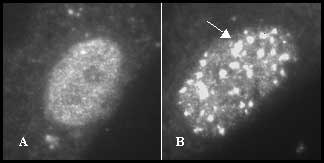PC388
Anti-hMre-11 Rabbit pAb
liquid, Calbiochem®
biological source
rabbit
antibody product type
primary antibodies
clone
polyclonal
form
liquid
contains
≤0.1% sodium azide as preservative
species reactivity
mouse, rat, human
manufacturer/tradename
Calbiochem®
storage condition
do not freeze
isotype
IgG
shipped in
wet ice
storage temp.
2-8°C
General description
This product has been discontinued.
Recognizes the ~85 kDa hMre-11 protein in IMR90 and K562 cells.
Immunogen
Application

Immunoblotting (1 g/ml)
Immunofluorescence (1 g/ml)
Immunoprecipitation (1 g/reaction)
Packaging
Physical form
Analysis Note
IMR90 or K562 cells
Other Notes
Luo, G., et al. 1999. Proc. Natl. Acad. Sci. USA96, 7376.
Petrini, J.H. 1999. Am. J. Hum. Genet.64, 1264.
Carney, J.P., et al. 1998. Cell93, 477.
Haber, J.E. 1998. Cell95, 583.
Nelms, B.E., et al. 1998. Science280, 590.
Maser, R.S., et al. 1997. Mol. Cell Biol.17, 6087.
Xiao, Y. and D.T. Weaver. 1997. Nucleic Acids Res.25, 2985.
Dolganov, G.M., et al. 1996. Mol. Cell Biol.16, 4832.
Petrini, J.H., et al. 1995. Genomics29, 80.
Legal Information
Disclaimer
Not finding the right product?
Try our Product Selector Tool.
Storage Class Code
10-13 - German Storage Class 10 to 13
Regulatory Information
Certificates of Analysis (COA)
Search for Certificates of Analysis (COA) by entering the products Lot/Batch Number. Lot and Batch Numbers can be found on a product’s label following the words ‘Lot’ or ‘Batch’.
Already Own This Product?
Find documentation for the products that you have recently purchased in the Document Library.
Our team of scientists has experience in all areas of research including Life Science, Material Science, Chemical Synthesis, Chromatography, Analytical and many others.
Contact Technical Service